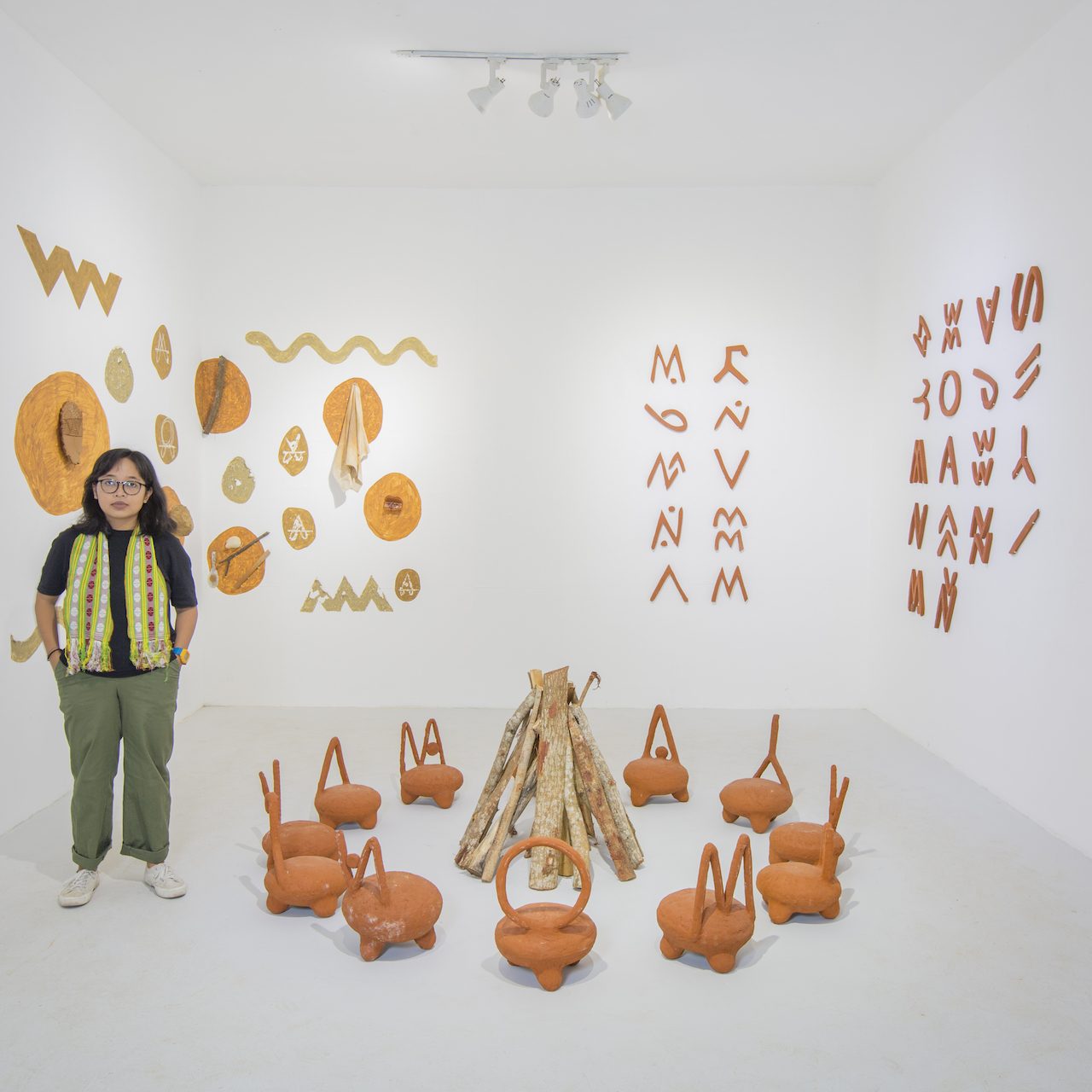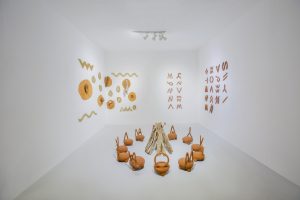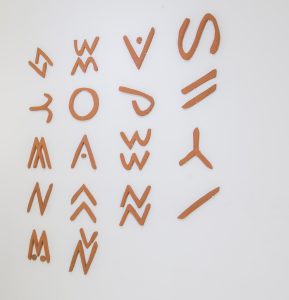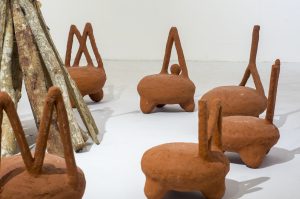Dyah Retno (Indonesia-Yogyakarta)
Dyah Retno was born on March 9 in Medan and was raised there. She took her undergraduate studies at the Ceramics Craft Department at the Indonesian Art Institute (ISI) Yogyakarta in 2012 and four years later, she continued her master’s studies at ISI Yogyakarta with the same major. Working with ceramics in the contemporary art space since 2014, many of her works have adapted the detailed radiolarian form of single plankton cells scattered in the ocean.
“Physis” was her most ambitious project to date where she has worked on from 2016 to 2020, Dyah envisioned herself not only as an artist, but also attempting to bring science into her work in processing ceramic waste so that it can become a new material with optimal properties, just like original ceramic material. In the series “Physis” she tries to criticize the ceramic industry labeled “environmentally friendly” which was not actually responsible for the production of its waste.
Dyah’s works has been exhibited at the National Gallery of Indonesia, Bentara Budaya Bali, ArtJakarta, Sonobudoyo Museum, and lately, at Asana Bina Seni Biennale Jogja.
Her solo exhibition was held at Pendhapa Art Space, Yogyakarta (2017). Group exhibitions was held including Asana Bina Seni Your Connection Was Interrupted, Yogyakarta Cultural Park (2020); Wirama Group Exhibition FKY, Sonobudoyo Museum, Yogyakarta (2019); Social Envoy, Bentara Budaya Bali (2019); and Gegayutan Nandur Srawung, Yogyakarta Cultural Park (2019).
“Tanah Timor” (2021)
Ceramic Installation, Archive, Mural | Variable size
“Tanah Timor” is a long-term project that began with Dyah’s residency in Mollo, East Nusa Tenggara to explore pottery crafts in eastern Indonesia. She is interested in tracing the shapes and motifs of the Lota letters from Flores up to the ancient ceramic firing technique that is influenced by Lapita people. The Lapita people (1600–500 BC) are believed to be the ancestors of the Austronesian and Melanesian people whose heritage is scattered in various places in Oceania and eastern Indonesia. Pottery is among the products of material culture commonly found in various areas, mostly in the form of pitchers or plates with various motifs.
Dyah made an installation of pottery chairs arranged in a circle decorated with Lota letters to borrow and explored in the context of visual language. The Lota letters are often used as motifs in various forms of crafts. Dyah hypothesizes that it is one of the steps people take to communicate through letters. Meanwhile, the layout of the chairs reflects the culture of community discussion and is adapted from the shape of a traditional house in eastern Indonesia which is round in shape and has a low door—as a representation of respect to the elders and ancestors.




